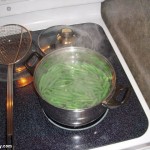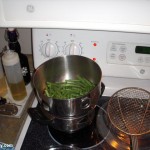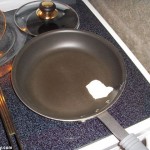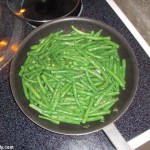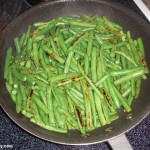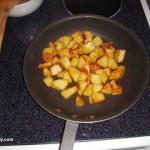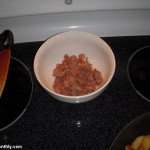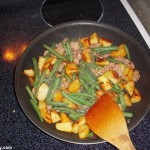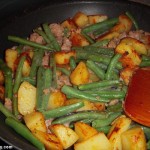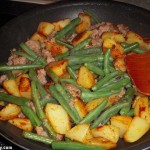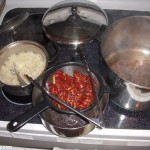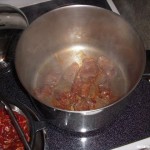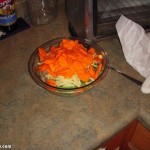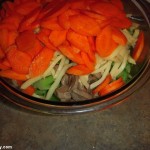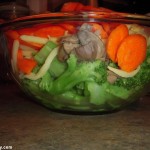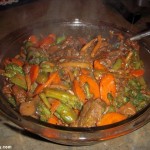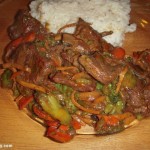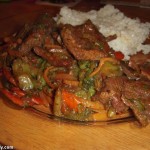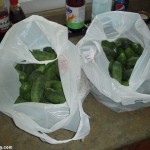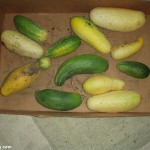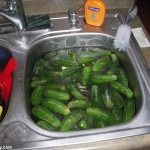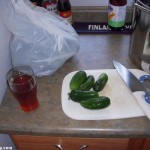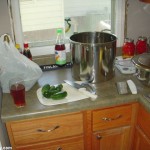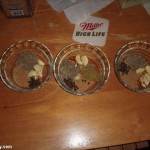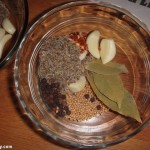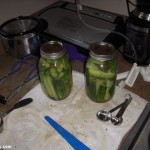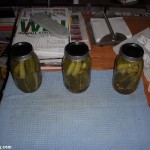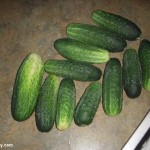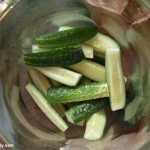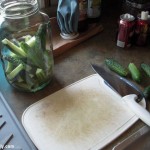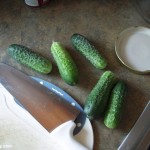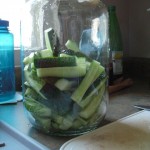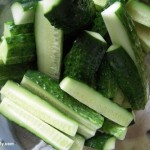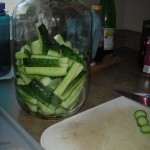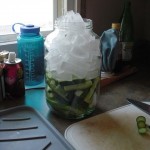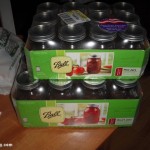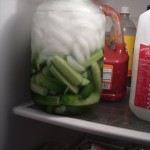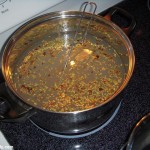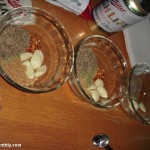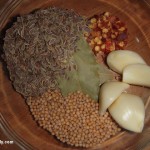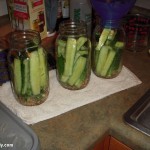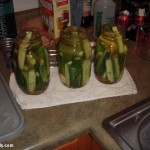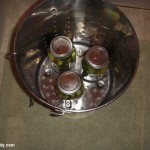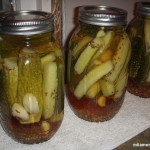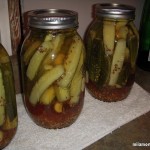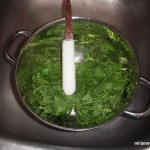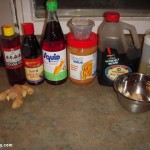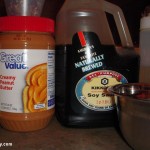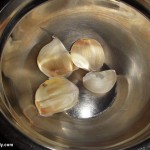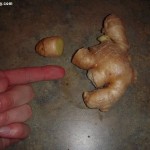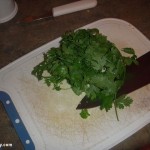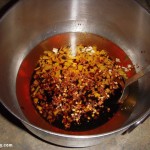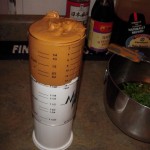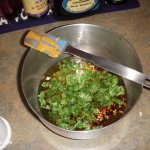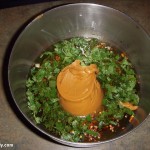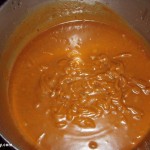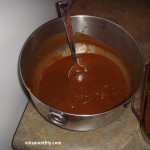This is totally a random creation on my part, but a pretty taste one. It all started earlier in the week, when I cooked up some green beans to go with my dinner. Which ended up being nothing more then boiling 1.66 lbs of green beans for 5 mins, then adding them to a hot frying pan with a little bit of bacon fat, red pepper flakes and garlic powder, and just cooking them on medium high heat until browned (about 5-10 mins.)
It wasn’t until after I made all those beans, that I realized I needed to re-purpose those beans into another dish, since eating just a pile of cooked beans is boring.
As usual I dug into my memory banks, and the week before in Utah, JRR made up this hash for breakfast one morning with leftover steak and fingerling potatoes. As usual, I had a bunch of random stuff in the fridge, so here was what I came up with for a quick hash:
Ingredients:
- A large handful of cooked green beans (using cooking direction above)
- 4-5 russet potatoes, peeled, cubed
- 1/3 lb of hot breakfast sausage
- Rendered bacon fat
- Lawry’s Season Salt
- Black pepper
Technique:
It really could be simpler to make this dish. First thing, in a hot frying pan, brown the breakfast sausage until fully cooked. While you’re cooking the sausage, microwave the potatoes using this recipe. With the sausage cooked, and transferred to a bowl to cool, add the bacon fat to the hot pan, season and cook the potatoes using the same recipe. Finally during the last 2-3 mins of cooking time on the potatoes, add in the sausage and green beans, and toss until the green beans have heating thru, then serve and enjoy.
Side Notes:
1) The green beans were pretty good on their own, with the garlic powder, bacon fat and red pepper flakes. But they are out of this world with the potatoes and sausage, so this “recipe” is a keeper in my book.
2) When I originally made the green beans, I didn’t really anticipate using them for another dish. So they were fully cooked the first time around. This was part of the reason why I added the green beans at the very end of the potato cooking, since they really only needed to be re-heating, from being in the fridge overnight.
